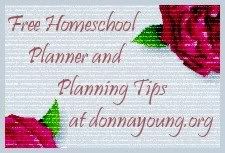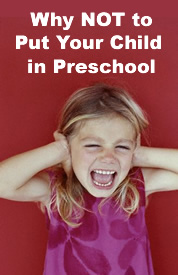We had a visitor in our backyard this week—one that really surprised us. Here’s what
happened:
The dogs were barking like crazy. They seemed to be barking at something on the ground. In the past, they’ve killed mice (our doxies are great mousers), toads (I can’t tell you how many toads I’ve saved from the “jaws of death”—I’ve decided to count next spring/summer), baby birds, and kittens (they dug under the fence and dragged them out of a neighbor’s yard—so sad–but they survived, thank goodness.) Anyway, the dogs were intently staring at something
on the ground, and barking like maniacs. I sent Ben outside to see what they were upset about, but I quickly followed him outside when I heard the dogs starting to fight over it. Was it another mouse, or some other creature I needed to save? I could see something in the grass, oblong shaped, but I wasn’t quite close enough to see what it was (or didn’t believe my eyes) until Ben shouted, “It’s a turtle!”
Sure enough, it was a turtle, flipped onto its back. I quickly snatched it out of the dog’s reach and brought it to safety inside.
The turtle was completely pulled into his shell. There were not even any visible openings for its head, arms, or legs. We put it in a plastic container with some lettuce and a lid filled with water, and waited to see what would happen. We weren’t even sure if it was alive.
But after only a few minutes, a little head poked out! While the boys watched it, I got on the internet to see if I could identify it. I had noticed that the bottom of its shell seemed to be cracked in a straight line across the upper third of its body, and there was a tiny bit of blood in spots. That “crack” turned out to be a hinge—and we quickly identified it as a box turtle.
I found out that the box turtle’s hinge allows it to completely hide inside its shell. (There aren’t any visible holes in the shell at all when it’s pulled inside!) It can open and close its hinge like a little door. Also, while inside their shells, box turtles can move their hinge and “rock” themselves from front to back. There is a band of skin around their necks—almost like a tight, thick choker necklace—that their head retracts into. Josh said it looked like
leather. This little guy had three back toes and four front toes, both with impressive little claws, and it had orange spots on its body. Whenever it was startled, it hissed. We were fascinated!
The boys begged to keep the turtle, but I knew that its presence, even in a habitat in the front yard, would drive our dogs nuts. I also knew my dear husband had no interest in trying to build
us a safe place to keep him/her…so I decided to find our visitor a new home, and it’s a good thing I did.
A friend knew a friend who kept turtles, and she agreed to take it…until she saw it, that is. She could tell that it was a female, and she could tell right away that it was hurt and might
be sick. She didn’t want to risk exposing her healthy turtles to a sick one. So I drove it out to California Living Museum, having been assured by another friend that they would take her. However, they take only indigenous animals, so they didn’t want her, either! Even so, it wasn’t a wasted trip, because they gave me the name of someone from our local “Turtle and Tortoise Club”, saying they did “recues.” What a relief.
That very night we bid good-bye to our visitor and drove her to the man from the Turtle Club. He immediately recognized that her shell had been chewed, right near her head (I don’t know why I didn’t realize it—it was obvious.) Also, her hinge had small specks of blood on it, still. Additionally, by then, we had realized that she wasn’t eating. He assured me that she would be seen by a vet right away, be nursed back to health, and then placed in a good home.
So ends our turtle adventure–except…naturally, like any typical homeschooling family, we had to learn more about turtles!
Box Turtle facts we learned (besides what I shared above):
-Box turtles are land-dwellers.
-Our little turtle was no more than 5 or 6 inches long, but she was surprisingly heavy.
-Box turtles eat grass, lettuce and so on (as I expected), but I was surprised to find out that they are omnivores–enjoying snails, worms, and other insects as well (they eat the snails shell and all.) According to Box Turtle Care A to Z, “Wild turtles are omnivores and in will eat earthworms, snails, grubs, beetles, caterpillars, carrion, grasses, fallen fruit, berries, mushrooms and flowers. They will take a bite of anything that smells edible.” Apparently they love corn on the cob.
-Their backbones and ribs are fused to their shell. Since they have backbones, they are vertebrates.
-Turtles hibernate. Our friend told us that their pet turtles stop eating before hibernation (that’s not why ours had stopped eating–it is still warm here, and too soon for hibernation). When it’s time for them to hibernate, some people put their turtles in the vegetable drawer of their refrigerators for the winter; others put them in boxes (with newspaper padding) and then put them on a shelf in the garage until spring.
-Box turtles cannot right themselves if they are flipped on their backs. If we hadn’t found her, she would have died.
-Box turtles are NOT slow. They are quick little characters, and can even CLIMB.
-Box turtles can live as long as fifty years.
This was a unique opportunity for us to see a turtle close up–it really was amazing. I’m sorry the dogs chewed on her…I’m sorry we couldn’t keep her…but I’m glad we got to study
her for a couple of days, and glad to know she’ll get a good home.
Turtle books we’re going to read for continued research (This is one of those “teachable” moments that we’ll turn into a mini unit study):
Box Turtle at Long Pond, by William T. George
Take Along Guides: Frogs, Toads, and Turtles, by Diane L. Burns
A Turtle in the House, John Gabriel Navarra
Album of Reptiles, by Tom McGowen
(We’ll see if we get off on a tangent of reptiles, in general.)
Books for the boys to read:
Let’s Get Turtles (A Science I Can Read Book), by Millicent E. Selsam (a longer one)
Reptiles do the Strangest Things, by Leonora and Arthur Hornblow
© 2011 Susan Lemons all rights reserved. Copyrighted materials may not be re-distributed or re-posted without express permission from the author.



















